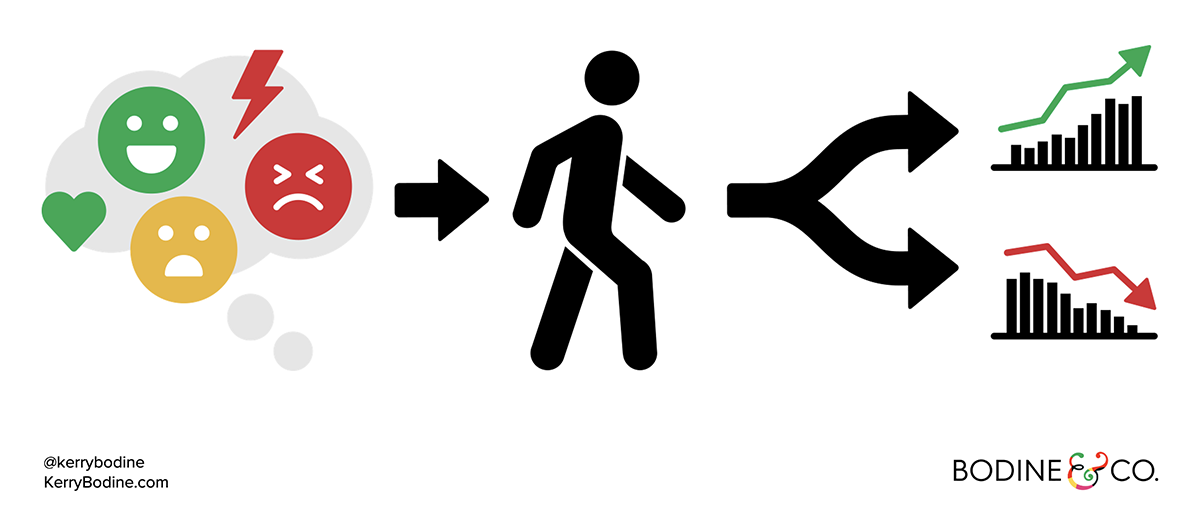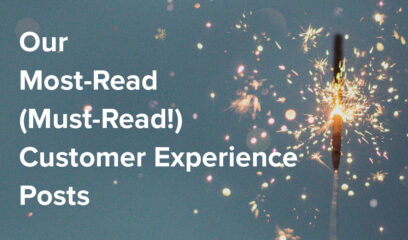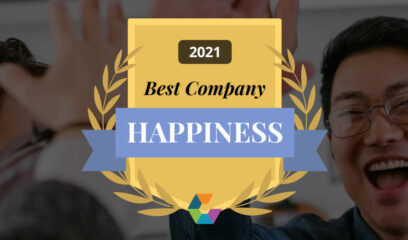Here’s how I define customer experience: It’s your customers’ thoughts, emotions, and perceptions about their interactions with your organization.
These words — thoughts, emotions, perceptions — sound touchy-feely. Fluffy even. And because of that, many execs and organizations still dismiss them. But here’s what innovative organizations understand: Customer experience is the superhighway to business success.
So how exactly do you get from smooshy feelings to cold hard cash? Quite quickly, as it turns out. Your customers’ thoughts, emotions, and perceptions drive specific behaviors — and those behaviors drive your business outcomes.

Let’s look at one way this chain of events plays out starting with a good customer experience.
- Thoughts/Emotions/Perceptions: You customer thinks, “That was easy!” or “They really appreciate me” or “I feel really valued.”
- Behaviors: You customer buys more from you or renews their subscription. (Medallia found that customers who gave the best customer experience scores spent 140% more — and stayed as customer nearly 6 times longer — than those who gave the worst scores.)
- Business outcome: Your organization’s revenue increases.
Not surprisingly, bad customer experiences have the opposite business result.
- Thoughts/Emotions/Perceptions: You customer thinks, “I’m angry!” or “Why does this have to be so @!&#$ difficult?”
- Behaviors: You customer tells all their friends, family members, and co-workers about their bad experience. (A Salesforce study found that 62% of customers say they share bad customer experiences with others.) All of those people, in turn, follow the advice of their trusted ally and take their business elsewhere.
- Business outcome: Your organization loses out on potential growth.
Let’s take a look at one more scenario involving a bad customer experience.
- Thoughts/Emotions/Perceptions: You customer thinks, “My bill looks wrong” or “I have no idea how to fill out this form.”
- Behaviors: You customer calls customer support.
- Business outcome: Your organization’s cost to serve increases.
We find this simple, yet powerful chain of events in both business-to-consumer (B2C) organizations — like hotels and retailers — and in business-to-business (B2B) organizations — like consulting firms and enterprise software developers. In fact, Salesforce conducted its research with both consumers and business buyers, and in several cases found that the business buyers had stronger behavioral reactions to good and bad experiences than consumers did.
If you’re having trouble articulating the connection between customer experience and business outcomes, it’s probably because you’re not accounting for the customer behaviors that connect the two. Add that into your CX business case, and you’ll soon be on the superhighway to success.
***
Photo by David Becker on Unsplash




